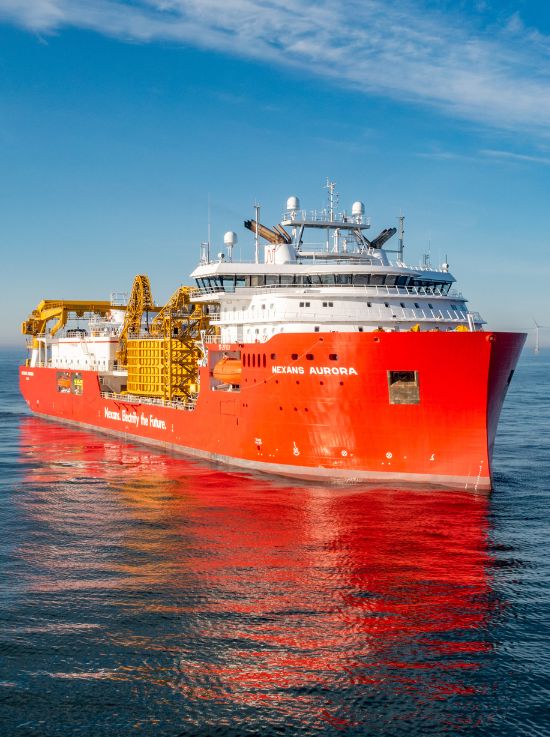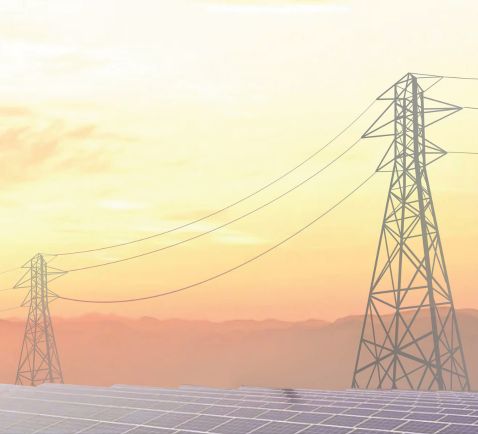Rail networks and equipment

Rail networks and equipment: cables for every application
The rail sector is playing a central role in the energy transition. Electrically-powered rail transport is emerging as a sustainable means of transport that could reduce emissions worldwide. Trains are an alternative to aircraft for short and medium-distance journeys. Rail networks and equipment rely on a variety of cabling systems, particularly for telecommunications and energy.
Challenges facing the rail network and equipment sector
Urban and high-speed rail networks are a convenient, low-emission solution for local, regional or national travel. At the same time, the carbon footprint of the rail industry is reduced still further when trains are powered by clean energy. In this way, railways contribute to sustainable mobility, carrying both people and goods.
Rail transport provides a solution to a range of problems associated with the energy transition and the increasing density of the urban population. This is the backdrop to ongoing initiatives to build, modernize or extend urban and suburban transport networks. To enable trains to cross borders, greater interoperability is required. This means complying with new, harmonized standards.
The rail transport sector depends primarily on the quality of its infrastructure, in particular cables and cabling systems for electricity, signaling and telecommunications. More specifically, high-speed trains require cables of varying characteristics in terms of bandwidth, safety, electromagnetic immunity and resistance.
Each means of transport has its own specific cable requirements. All of them require efficient, compact, lightweight, durable and hard-wearing solutions requiring minimal maintenance and easy to upgrade.
Rail operators are looking to source a range of high-quality cables from a single supplier with expertise in the technologies required for power and data and wireless services, and with the skills to deploy cable systems on main lines, in public transport, in tunnels, on streets and on other thoroughfares. The rail sector also needs fire-resistant cables to protect the public and the infrastructure.
As a leader in cabling for rolling stock, Nexans is able to draw upon its technological expertise and innovation capabilities to meet the current and future needs of OEMs, operators and passengers.
Evidence
To achieve carbon neutrality by 2050, the rail sector needs to commit to cutting CO2 emissions by 5% every year through to 2030.
Nexans solutions
- Supply halogen-free, flame-retardant cables emitting low levels of toxins and fumes for public places and tunnels, contributing to fire survival, fire-fighting and emergency operations.
- Market a complete range of high-end FLAMEX® products for communication, monitoring and energy distribution.
- Design turnkey, customized solutions to meet the challenges faced by the rolling stock sector.
- Supply a wide range of cables and components for power, signaling and telecommunications, tailored to the changing needs of railway infrastructure.
- Deliver advanced telecommunications and train control as part of an offering spanning wide-area networks (WAN) for main lines, MAN for subways, light rail and intercity links, as well as station range cables, for efficient management of rail networks.
- Install fiber optics for trunk lines and radio systems as part of analog and digital multi-level railway applications (ERTMS/ETCS).
- Advise operators on changes to specifications and standards, and provide customized services in engineering, turnkey installations and maintenance worldwide.
Our objectives
- Prefer plug & play solutions to facilitate the deployment of projects in the rail sector.
- Pursue continuous R&D to ensure that all our products remain competitive, compatible with current standards and ecologically sound.
Frequently asked questions about rail networks and equipment
Find out more about rail networks and equipment
Brochures :






